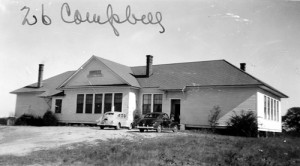Skip to where you start to see dates if you are looking for facts because the first part of this is just pretty much just me unpacking the mental mess I’ve accumulated from spending hours reading wills with the word “negro” in them. Thanks.
I stood at Campbell’s Mill, the ancient stacked stone dam still standing to hold torrents of river water from the mill pond below. My great great great great great grandfather, John Campbell, had settled this land, on this river, and began to carve from the frontier what was to become an extraordinary working estate.
By the time his own grandson, John Campbell Martin (Sr.) died, having spent his life as master of the family plantation, his property included about 130… people.
It is impossible to spend so much of my time with my head in a place of slavery and oppressive patriarchy without seeing its effects in our world today. I will spare you my postulating though and bring it back to that patch of land on the river in South Carolina. So I am sure that others have looked upon that dam and the ruins of the mill that operated there until just a few decades ago and thought of the accomplishment of their forefathers but the story of the family success becomes more complicated once you make your way to the family cemetery.
At first it looks tiny, the burial ground. There are only a handful of upright markers, each carved with the name of a respected member of the clan. Then you pull back. I can’t say that the dozens (to stay conservative with the number) of field stones all belong to slaves. There are too many to all represent the resting place of members of the Martin family though and I have no record of the property serving as a community church or graveyard — no reason to think that these stones represent anything but the people of this property. It kind of hit me then that this place is not ours alone. Of course, it is ours. Legally it belongs very legitimately to a set of siblings who look after it and appreciate the weight of it. Historically though, this isn’t just our ancestral home. And it was not our blood alone that built what it had at one time become.
I am not trying to take something from my own family’s history, but I can’t not stand in reverence to the backs that history was built upon. I think that to spend this much time studying what happened there and pretend that I am researching a family and not the entire ecosystem of slaves and masters is to not be honest about this place, these people, or even our own willingness to work within a system that we can thrive in at the expense of others.
So that would be a nice ending, but I am just getting to Annette and Eliza.
Annette Amelia Martin was born on August 7, 1837. She died on April 27, 1849 at the age of 11. Eliza Harrison Martin was born November 30, 1848 and died before her first birthday on July 27, 1849. I didn’t have any previous record of these two girls, which wasn’t really odd because birth certificates weren’t much of thing at the time. Birth records were kind of the domain of the church and they’re much less accessible than government rolls. With the information on their headstones though I could go looking for a 1850 mortality schedule.
They were, in fact, on the 1850 mortality schedule for Abbeville County. Eliza died of “congestion chills.” One line above, Annette’s cause of death is listed as measles. Also, Annette was a slave.
The 11 year-old with the headstone in the family cemetery baring the family name was a slave and described as “black.” Who knows who else she was, but usually it didn’t matter. The family patriarch in 1837 would’ve been John Campbell Martin (Sr.). In fact, he would’ve been the only Martin on the property. His father died ten years prior to Annette’s birth and had no other sons. John Campbell Martin (Sr.) had a whole host of aunts but no natural uncles to carry the Martin name.
Of course I think that I know who Annette’s father may have been, but natural paternity was so rarely given any consideration that it alone seems like a strange reason to hold Annette in the same regard as they held white family members born as a result of a marriage. The lack of importance given to paternity under the systems of 1850 South Carolina cannot be understated. If my suspicions are true, that would make Annette, the slave, my great grandmother Pearl Campbell Martin’s great aunt. I wonder how her life would’ve influenced the Martin family, whether she was a natural born daughter or just a friend held so close as to be given the family name and put to rest next to their own infant daughter. If there’s another answer, and I am sure there might be, I would LOVE to know what it is. The fickle and dusty mistress of history doesn’t seem to be forthcoming with it though.
As a side note, I believe that Eliza may be named after Eliza Harrison (Jones), born 1822 and a member of Trinity Episcopal in Abbeville. The source of Annette Amelia’s name isn’t clear, but I do wish I had a list of the slaves living on the property at the time of her birth.


